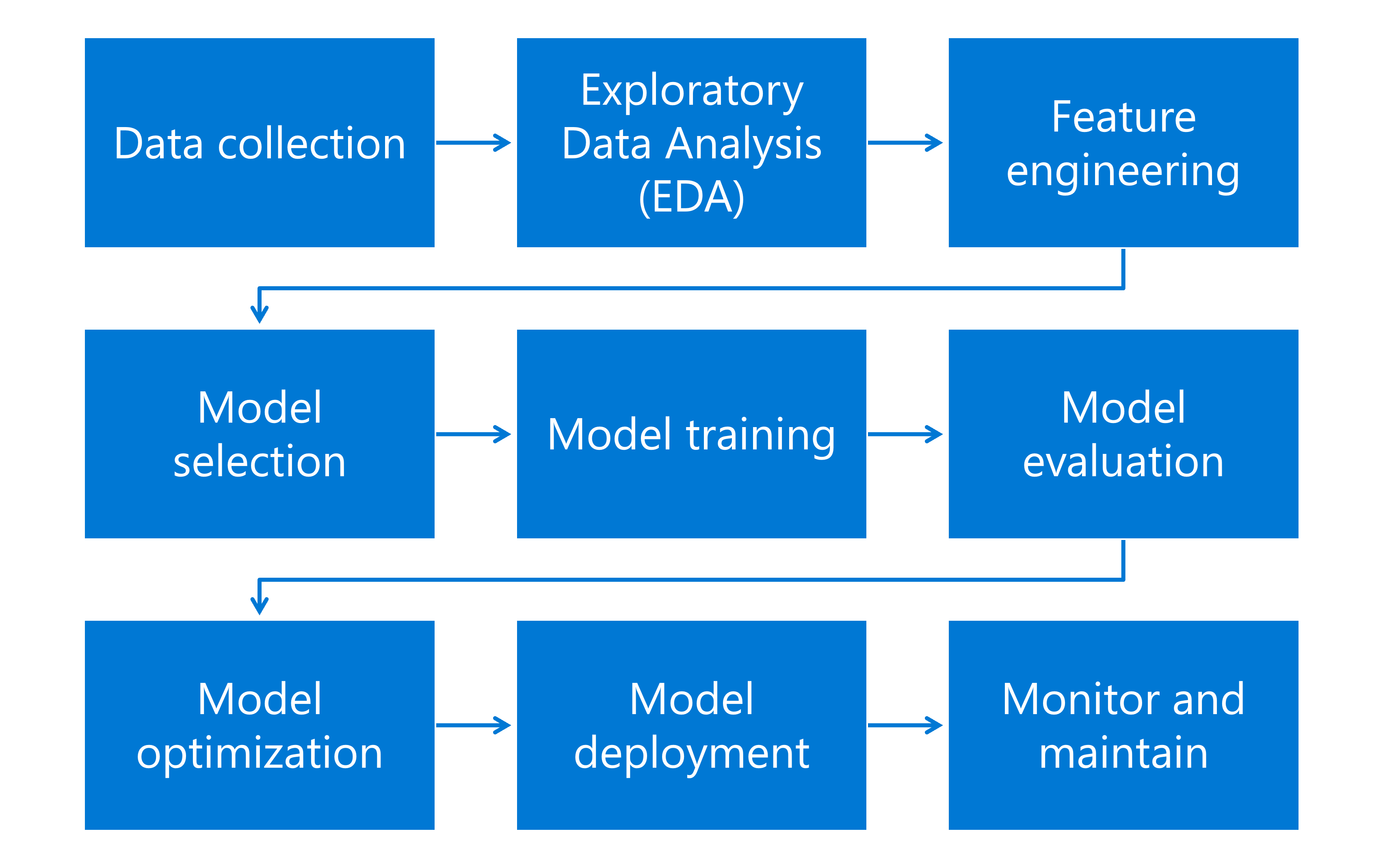Introduction
Machine learning is transforming the way businesses operate by enabling data-driven decision-making and automation. However, developing a machine learning model is just the beginning. The real challenge lies in deploying these models into production environments where they can deliver real-time insights and predictions.
Azure Databricks is a versatile platform that combines data engineering and data science. It provides a unified analytics platform that simplifies the process of building, training, and deploying machine learning models at scale. With its collaborative environment, data scientists and engineers can work together to create effective machine learning solutions.
To fully use the capabilities of Azure Databricks, it's essential to understand the complete machine learning workflow.
Explore the machine learning workflow
The machine learning workflow is a comprehensive process that encompasses several critical tasks, each playing a vital role in developing and deploying effective machine learning models. The machine learning workflow includes the following tasks:

- Data collection: The data can be anything from numbers and images to text, depending on what the machine needs to learn.
- EDA (Exploratory Data Analysis): Analyzing the data to summarize its main characteristics and uncover patterns.
- Feature engineering: Creating new features or modifying existing ones to improve model performance.
- Model selection: The model is a mathematical formula or algorithm that makes predictions by finding patterns in data.
- Model training: The machine learning algorithm uses data to learn the patterns that connect the input (features) to the output (target). The model adjusts its parameters to minimize the difference between its predictions and the actual outcomes in the training data.
- Model evaluation: The model's performance is evaluated using a new set of data called the test set. Metrics such as accuracy, precision, recall, and the area under the ROC curve are used to evaluate different types of models.
- Model optimization: The model's parameters and algorithm are fine-tuned to improve its accuracy and efficiency.
- Model deployment: The model is deployed into a production environment where it makes batch or real-time predictions.
- Monitor and maintain: Continuous monitoring is crucial to ensure the model remains effective as new data and potential shifts in the underlying data distribution occur.
To navigate each phase of the machine learning workflow and bring models into production, it's important to use the right tools and technologies. Azure Databricks, along with other Azure services, offers a set of tools that support every step of this process. From data collection and feature engineering to model deployment and monitoring, Azure provides tools that enable smooth integration and efficient workflows.
Let's explore the tools that help you bring your machine learning workflows into production.